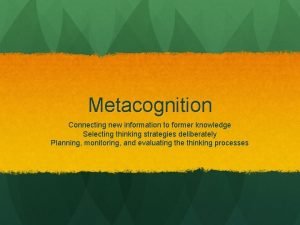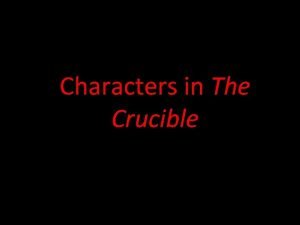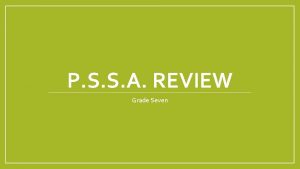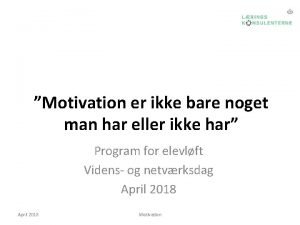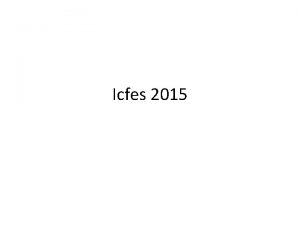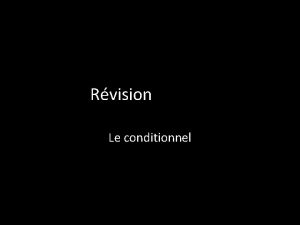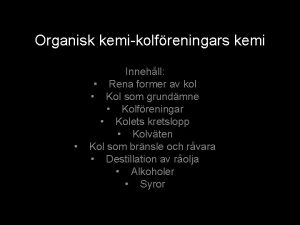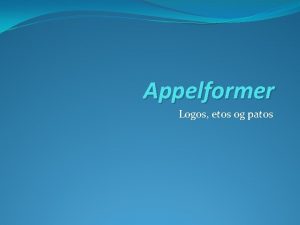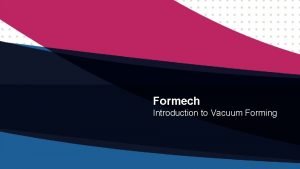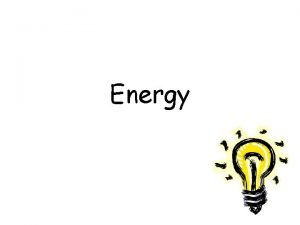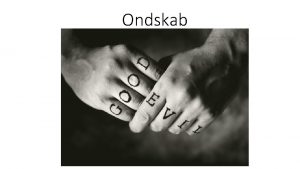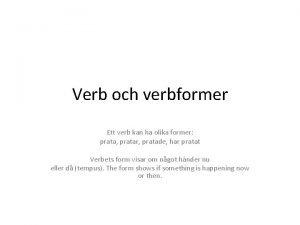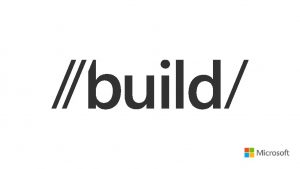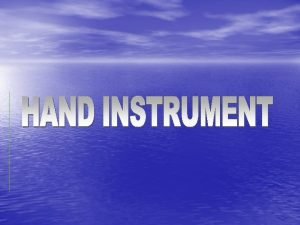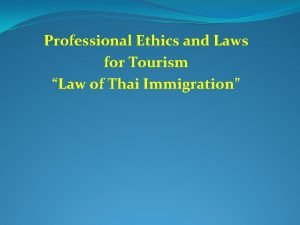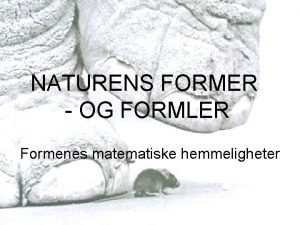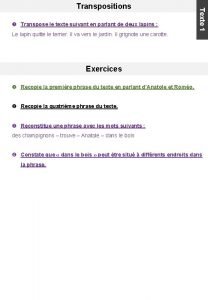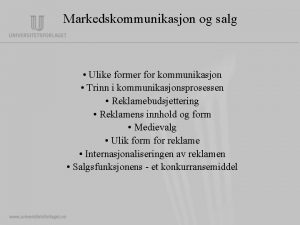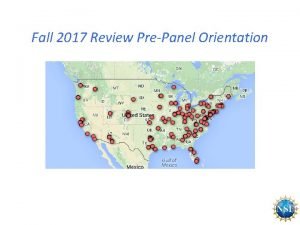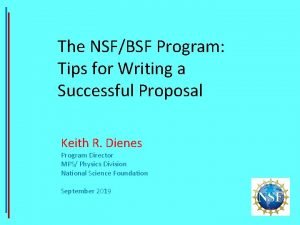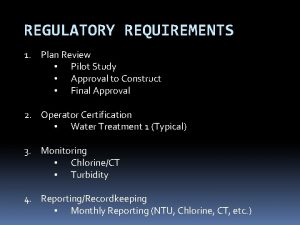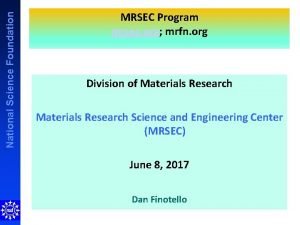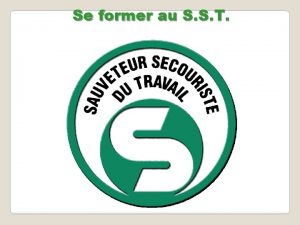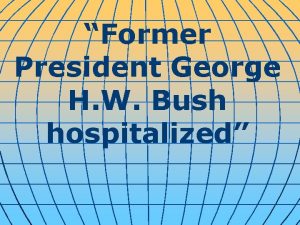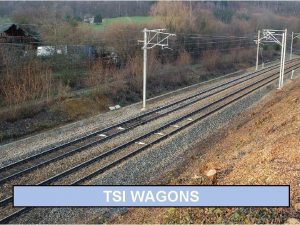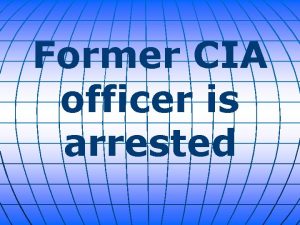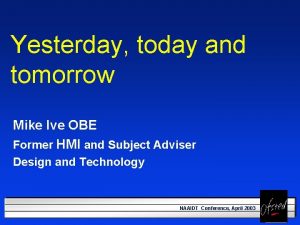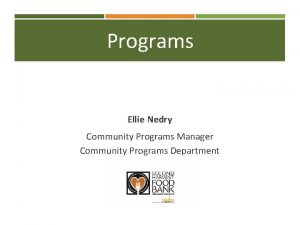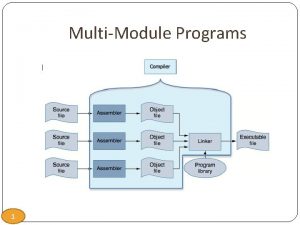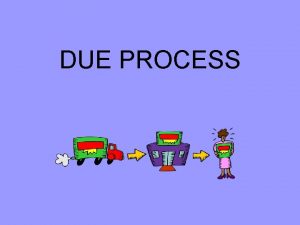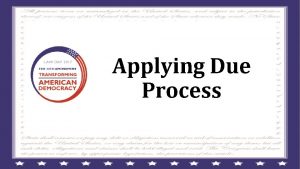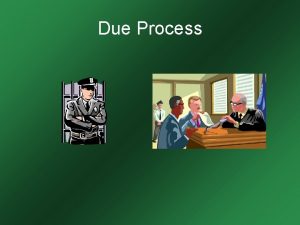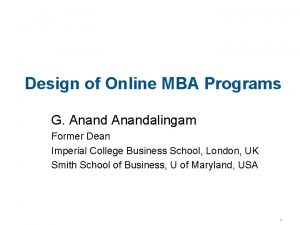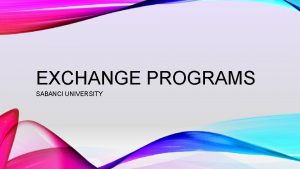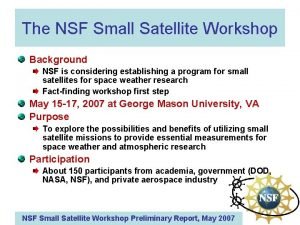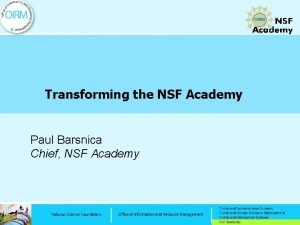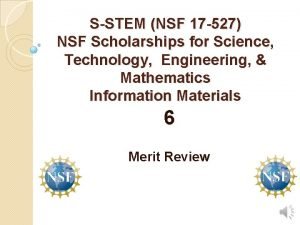NSF DUE PROGRAMS Mike Erlinger Former NSF DUE



































![[1] Mervis, J. , NSF director unveils big ideas, Science, 352 (6287), 755 -756, [1] Mervis, J. , NSF director unveils big ideas, Science, 352 (6287), 755 -756,](https://slidetodoc.com/presentation_image_h2/4533ccd75f84ce33dc416ccd550a5d78/image-36.jpg)
- Slides: 36

NSF DUE PROGRAMS Mike Erlinger Former NSF DUE PO NSF Division of Undergraduate Education (DUE) Education and Human Resources Directorate (EHR) Caution: All the information included in this presentation represents the opinions of the individual program officer and not an official NSF position. National Science Foundation Division of Undergraduate Education

Selected STEM Education Programs • DUE Programs – – Advanced Technological Education (ATE) Improving Undergraduate STEM Education (IUSE: EHR) Robert Noyce Teacher Scholarship Program (Noyce) Scholarships in Science, Technology, Engineering, and Mathematics Education (S-STEM) • EHR-Wide Programs – EHR Core Research (ECR) – Improving Undergraduate STEM Education: Hispanic-Serving Institutions (HSI Program) • Cross-Directorate Programs – Research Experiences for Undergraduates (REU: EHR) – Faculty Early Career Development (CAREER) Programs – Research Coordination Networks for Undergraduate Biology education (RCN: UBE) – INCLUDES and other Programs National Science Foundation Division of Undergraduate Education 2

DUE’s Mission: To promote excellence in undergraduate science, technology, engineering, and mathematics (STEM) education for all students. National Science Foundation Division of Undergraduate Education

Projects • Transformative activity involves ideas, discoveries, or tools that radically change our understanding of an important existing scientific or engineering concept or educational practice or leads to the creation of a new paradigm or field of science, engineering, or education. Such research challenges current understanding or provides pathways to new frontiers. • Transformative activity results often do not fit within established models or theories and may initially be unexpected or difficult to interpret; their transformative nature and utility might not be recognized until years later. Transformative Activity Leads to unexpected Redefines the boundaries Challenges conventional insights that enable new of science, engineering, or wisdom techniques or National Science Foundation education Division of Undergraduate Education methodologies

ATE Advanced Technological Education Solicitation: Due Date: National Science Foundation Division of Undergraduate Education NSF 17 -568 October 4, 2018 October 3, 2019

Program Solicitation NSF 17 -568 ATE focuses on the education of technicians to meet workforce demands in existing and emerging advanced technological fields. Must respond to hiring needs for highly-skilled technical workforce in the service area of the proposing institution(s). Must address sustainability. Colleges that award twoyear degrees and their faculty must play a leadership role on all projects. Requires partnerships between two-year colleges and business and industry, along with secondary schools, four-year colleges and universities, and government, as appropriate. Read the program solicitation for more detailed information. 6 National Science Foundation Division of Undergraduate Education Due 1 st Thursday in October

ATE: Three Program Tracks Projects Centers Up to $600 k, up to 3 -yrs except Small/New to ATE ($225 K) yrs Adapt & Implement ($300 -300 K) Instrumentation Acquisition ($400 -500 K) Targeted Research on Technician Education From $150 K, up to 2 -yrs to $800 K, up to 3 - Two Types Center up to $5 million, 5 -yrs National Science Foundation One renewal possible Division of Undergraduate Education Resource Center up to $600 K, 3 -yrs One renewal possible

ATE Project Focus Areas 1. Program Development and Improvement 2. Curriculum and Educational Materials Development 3. Professional Development for Educators 4. Leadership Capacity Building for Faculty 5. Teacher Preparation 6. Business and Entrepreneurial Skills Development for Students 7. ATE Coordination Networks 8. Small Grants for Institutions New to the ATE Program** 9. Adaptation and Implementation 10. Instrument Acquisition with Curricular Modifications to Support the Instrumentation See Foundation ATE solicitation National Science Division of Undergraduate Education NSF 17 -568 for more details!

ATE Program Impact • Over 1500 awards since 1994 • 632 distinct institutions have received awards • 65% of awards have gone directly to 2 -year institutions • Over $1 billion awarded since 1994 • In 2016, collaborators provided approximately $27 million in monetary and in-kind support National Science Foundation Division of Undergraduate Education

• Improve STEM Learning & Learning Environments NSF 17 -590 • Build the Professional STEM Workforce for Tomorrow • Broaden Participation & Institutional Capacity for STEM Learning • Proposals should describe projects that build on available evidence and theory, and that will generate evidence and build knowledge. D&I due 2 nd Tuesday in Dec, E&D no deadline National Science Foundation Division of Undergraduate Education 10

IUSE: EHR Two Program Tracks Engaged Student Learning Focus on designing, developing, and implementing research on STEM learning models, approaches, and tools Two Approaches Exploration & Design (smaller scale) Up to $300 K Up to 3 yrs Development & Implementation (larger scale) Level I: Up to $600 K, Up to 3 yrs Institutional and Community Transformation Focus on increasing the propagation of highly effective methods of STEM teaching and learning Two Approaches Exploration & Design (smaller scale) Development & Implementation (larger scale) Up to $300 K Up to 3 yrs Level II: Submission Window: $600 K to $2 M, Up to 5 yrs Window: Oct. 01, 2017 – National Science Foundation Due Date: Dec. 12, 2017 – Oct. 01, 2018 Division of Undergraduate Education Oct. 01, 2018 Up to $3 M Up to 5 yrs Due Date: Dec. 12, 2017

Improving Undergraduate STEM Education: Hispanic. Serving Institutions HSI Program SOLICITATION: NSF 18 -524 Due: March 6, 2018 National Science Foundation Division of Undergraduate Education

HSI Tracks Track 1: Building Capacity • $500 K to $1. 5 M up to 5 years • Critical Transitions • Innovative Cross-Sector Partnerships • Research on Broadening Participation in STEM Track 2: New to NSF • Up to $250 K for up to 3 years Resource National Science Foundation Hub • Up to $3 M for up to five years Division of Undergraduate Education 13

S-STEM Scholarships in STEM SOLICITATION: NSF 17 -527 Due Date: March 28, 2018 Last Wednesday in March, Annually Thereafter National Science Foundation Division of Undergraduate Education

Mission of the S-STEM Program • To provide scholarships o to academically talented, low-income students o with demonstrated financial need o to increase STEM degree attainment and o to enhance the homegrown STEM workforce o ensuring the competitiveness of the US in the global workforce market. National Science Foundation Division of Undergraduate Education 15

The S-STEM Program: Brief Summary • Funding – At least 60% of the funds must be used for scholarships (direct financial support to students) – Up to 40% of funds may be used for other components: support structures, research, recruitment, mentoring, etc. • Required Elements – Provide faculty mentors for S-STEM Scholars – Develop a cohort experience for the scholarship recipients. – Generate knowledge about “what works” for S-STEM Scholars – Evaluate and disseminate what your project did National Science Foundation Division of Undergraduate Education 16

S-STEM Program Summary Deadline: March 28, 2018 NSF Solicitation 17 -527 Three Program Tracks Institutional Capacity Building Design and Development Two Tracks (Track 1) Single Institution (Track 2) Single Institution Up to $650 K Up to 5 yrs Up to $1 M Up to 5 yrs For institutions with limited experience in implementing effective curricular/ co-curricular National Science Foundation activities and no previous S-STEM awards Division of Undergraduate Education (Track 3) Multi-institutional Consortia Up to $5 M Up to 5 yrs Seeks to leverage S-STEM funds with institutional efforts and infrastructure to increase and understand impacts 17

• At least 60% of total amount requested must be requested for scholarships • Increase recruitment, retention, student success, transfer, if appropriate, and completion of STEM degrees by talented students with demonstrated financial need, and their entry into the workforce or graduate studies National Science Foundation Division of Undergraduate Education 18

Research Programs Research Experiences for Undergraduates Facilitating Research at Primarily Undergraduate Institutions NSF Graduate Research Fellowship National Science Foundation Division of Undergraduate Education

NSF 13 -542 Research Experiences for Undergraduates (REU) • Supports active research participation by undergraduate students • REU Sites - based on independent proposals to initiate and conduct projects that engage a number of students in research • REU Supplements may be included as a component of proposals for new or renewal NSF grants or cooperative agreements or may be requested for ongoing NSF-funded research projects National Science Foundation Division of Undergraduate Education Antarctica: Due 4 th Friday in May Others: Due 4 th Wednesday in August

REU Budget • Summer REU projects – $1, 200 per student per week (generally) – Including all direct costs and indirect costs--is generally expected not to exceed $1, 200 per student per week. • Academic-year REU projects – comparable on a pro rata basis • Projects that involve exceptional circumstances may exceed this limit. National Science Foundation Division of Undergraduate Education

Education and Human Resources Core Research (ECR) SOLICITATION: NSF 17 -509 Due: Second Thursday in September National Science Foundation Division of Undergraduate Education

ECR: Fundamental Research in STEM Ed STEM Learning Environments STE M STEM Workforce Development Broadening Participation National Science Foundation Division of Undergraduate Education

NSF 15 -509 EHR Core Research (ECR) Program Addresses persistent challenges in STEM: STEM Interes t Educatio n Partici. Learnin pation g Understand by emphasizing accumulation of robust evidence to inform efforts National Science Foundation to: Division of Undergraduate Education Build theory to explain Suggest interventio ns and innovations 24

NSF 15 -509 EHR Core Research (ECR) Program • Funding Levels/Types – – – Level I proposals: up to $500, 000 for up to 3 years Level II proposals: up to $1. 5 M for up to 3 years Level III proposals: up to $2. 5 M for up to 5 years Synthesis proposals: up to $300, 000 for up to 2 years Conferences and Workshops: generally $25, 000 to $100, 000 National Science Foundation Division of Undergraduate Education 25

Other Programs • Cyber. Corps(R) Scholarship for Service: Defending America's Cyberspace (SFS): NSF 15 -584 – addresses • cybersecurity education • workforce development – Scholarship track – Capacity track • Cyber. Learning: NSF 17 -520 – understand how people learn with the context of cyber innovation, learning innovation, how people learning in technology-rich environments National Science Foundation Division of Undergraduate Education

Louis Stokes Alliances for Minority Participation (LSAMP) SOLICITATION: NSF 17 -579 Due Dates: Bridge to the Doctorate (BD) Activity: 1 st Friday in November STEM Pathways and Research Alliances: 3 rd Friday in November New and Renewal LSAMP Pre-Alliance Planning, Bridge to the Baccalaureate (B 2 B), STEM Pathways Implementation-Only Projects: 3 rd Friday in November National Science Foundation Louis Regional Division. Stokes of Undergraduate Education. Centers of Excellence in Broadening

LSAMP emphasizes UG STEM education for unrepresented students • Ultimately results in the graduation – of well-prepared, highly-qualified students – from underrepresented groups – who pursue graduate studies or careers in STEM • Enable successful transfer of students from 2 -yr to 4 -yr institutions; • Increase undergraduate access to high-quality research experiences; and • Facilitate seamless transition of students into graduate programs National Science Foundation Division of Undergraduate Education

Louis Stokes Alliances for Minority Participation (LSAMP) • Authorized by Congress and established in 1991. • Supports comprehensive, evidence-based, innovative, and sustained strategies • Broadens participation of primarily undergraduate students from racial and ethnic groups historically underrepresented in STEM African Americans. Hispanic Americans American Indians Alaska Natives Native Hawaiians Native Pacific Islanders National Science Foundation Division of Undergraduate Education

LSAMP (cont. ) • Support is available for Alliances: � Bridge to the Baccalaureate � Bridge to the Doctorate grants � Pre-Alliance Planning grants � and other funding opportunities. National Science Foundation Division of Undergraduate Education

• Intellectual Merit Ø What will we learn? Ø How will it advance knowledge? • Broader Impacts Ø What will the impact be on society? Ø How will it make the nation a better place? • Educationally focused projects often have a hard time disentangling these, but you need to separate them out in your proposal. National Science Foundation Division of Undergraduate Education 31

1) What is the potential for the proposed activity to make a difference? a) By advancing knowledge and understanding within its own field or across different fields (Intellectual Merit); and b) By benefitting society or advancing desired societal outcomes (Broader Impacts)? 2) To what extent do the proposed activities suggest and explore creative, original, or potentially transformative concepts? 3) Is the plan for carrying out the proposed activities well-reasoned, well organized, and based on a sound rationale? 4) Does the plan incorporate a mechanism to assess success? 5) How qualified is the individual, team, or institution to conduct the proposed activities? 6) Are there adequate resources available to the PI (either at the home institution or through collaborations) to carry out the proposed activities? National Science Foundation Division of Undergraduate Education 32

PAPPG NSF 18 -1 National Science Foundation Division of Undergraduate Education 33

User-friendly Handbook National Science Foundation Division of Undergraduate Education Describing and Measuring 34

Common Guidelines NSF 13 -126 National Science Foundation Division of Undergraduate Education 35
![1 Mervis J NSF director unveils big ideas Science 352 6287 755 756 [1] Mervis, J. , NSF director unveils big ideas, Science, 352 (6287), 755 -756,](https://slidetodoc.com/presentation_image_h2/4533ccd75f84ce33dc416ccd550a5d78/image-36.jpg)
[1] Mervis, J. , NSF director unveils big ideas, Science, 352 (6287), 755 -756, 13 May 2016. DOI: 10. 1126/science. 352. 6287. 755 [2] Institute of Education Sciences and National Science Foundation. Common guidelines for education research and development. 2013. https: //www. nsf. gov/pubs/2013/nsf 13126. pdf. [3] August. S. E. , NSF PROGRAM OFFICER'S VIEWS: Common guidelines for conducting education research, ACM Inroads 8, 1 (February 2017), 35 -36. DOI: https: //doi. org/10. 1145/3029346 National Science Foundation Division of Undergraduate Education 36
 Cpmcd full form
Cpmcd full form Former knowledge
Former knowledge Vilka olika former av rent kol finns det?
Vilka olika former av rent kol finns det? Reverend of salem and former businessman in barbados
Reverend of salem and former businessman in barbados Which sentence uses commas correctly the former astronaut
Which sentence uses commas correctly the former astronaut Mette pless motivation
Mette pless motivation Old things have passed away isaiah
Old things have passed away isaiah Elephant riding in phuket texto completo resuelto
Elephant riding in phuket texto completo resuelto Former le conditionnel
Former le conditionnel Thailand former name
Thailand former name Kolets rena former
Kolets rena former Mc formers
Mc formers My former speeches have but hit your thoughts
My former speeches have but hit your thoughts Etos, patos, logos
Etos, patos, logos Formech vacuum former
Formech vacuum former Missy diwater the former platform
Missy diwater the former platform Former for ondskab
Former for ondskab Reflexiva verb
Reflexiva verb Former xamarin cofounder miguel icaza
Former xamarin cofounder miguel icaza Indirect lost wax casting
Indirect lost wax casting Straight chisel dental use
Straight chisel dental use Tourism law thailand
Tourism law thailand Matematiske former
Matematiske former Angle former
Angle former Caddie en bois jouet
Caddie en bois jouet Missy diwater the former platform diver
Missy diwater the former platform diver Effekthierarki
Effekthierarki Former situation
Former situation Geometri för barn
Geometri för barn Nascita di sparta
Nascita di sparta Quadrilateri con due lati opposti paralleli
Quadrilateri con due lati opposti paralleli Due piccole sfere identiche sono sospese a due punti
Due piccole sfere identiche sono sospese a due punti Procedural due process vs substantive due process
Procedural due process vs substantive due process Prepanel
Prepanel Nsf-bsf
Nsf-bsf Nsf ansi 60
Nsf ansi 60 Miriam deutsch nsf
Miriam deutsch nsf

